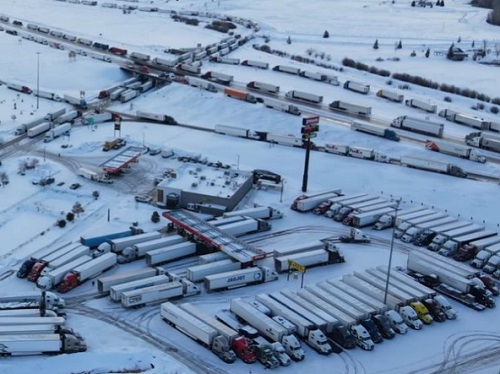A recent Wyoming Department of Transportation video illustrates how the agency relies on contracted meteorologists to provide detailed forecasts to the agency’s highway crews, motorists, commercial truckers, and others about how weather changes might impact road conditions.
[Above image by Wyoming DOT]
The agency contracts with local company Dayweather, which provides an onsite meteorologist who in turn provides forecasts tailored to how weather patterns could affect state highway road conditions.
Mark Heuer, a Dayweather meteorologist who serves as Wyoming DOT’s road weather manager, explained in the video how he takes what is happening weather-wise in the atmosphere and then creates road condition reports not only for motorists but also for agency highway crews who may need to gear up for snow and ice removal operations based on forecasted conditions.
“For large weather events, we’ll have planning weather briefings with [road] maintenance teams so they can move and reallocate assets and personnel from one section of the state that may not be affected by the weather to other areas that are being severely impacted by storms.”
Heuer said in the video that a public “weather impacts” map is posted daily on Wyoming DOT’s website for motorists, with forecasts for truckers provided through the agency’s commercial vehicle operator portal. He added that advisories are issued for high impact storm events, with regular video forecasts produced and distributed to give the traveling public and the commercial vehicle operators a “heads up” as to how the weather could potentially alter highway travel plans.
In a similar weather-related vein, the Wyoming DOT also released a video detailing the avalanche mitigation strategies used by the agency to protect roadways statewide.
For example, just one area of the state – Teton County – is home to nearly 80 avalanche “slide paths” that have the potential to impact highways. The agency noted in the video that its avalanche program technicians keep a close watch on weather and snow conditions throughout the winter season; even performing tests on the snow itself in different areas of elevation to better gauge the risk of avalanches.
 States
States
Nick Donohue Appointed Virginia’s Secretary of Transportation
December 12, 2025 States
States

